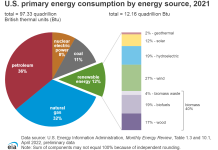alpg88
Flashlight Enthusiast
- Joined
- Apr 19, 2005
- Messages
- 5,343
My point exactly, you store fuel for emergencies, (people do that) for your generator, atv, snow blower, snowmobile...etc oil for your heat. if you relay on grid electricity for all that, you do not have as many options, even if you have panels on your roof, by themselves they wont take you far. As far as payment system, does not really matter some will sell some wont, but it will be available unlike grid powerJust about everyone that lost power in the 2021 TX blackout also lost heat despite residential gas systems generally remaining online. That storm motivated me to get a minimal backup generator setup that can manage WFH (Work From Home) as well as conveniences like the refrigerator and the furnace since short term the TX grid isn't apt to be made any more reliable.
In this same scenario the roads are likely impassible and gas stations aren't getting deliveries. Blackouts can also jeopardize communications meaning no plastic transactions - and even if you've got cash they still might not be able to make sales such is the nature of POS systems these days.
During the Texas storm of 2021 the demand crunch ahead of time combined with the roads being impassable for days meant that many gas stations ran dry anyway.
General advice on EVs is to plug in when parked at home - cheaper than public charging and start the next day on full; not too far separated from the general idea that you should refill your ICE vehicle around ¼ since contingencies happen.
Wind has been more than 20% of Texas electrical generation for many years now which means a substantial reduction in fossil fuel usage. Yes these are intermittent sources but there are adequate thermal plants in the state; CC gas plants can spin/throttle up the turbine section quickly and peaking plants are even faster to spin up. CC gas plants' responsiveness has done more to retire coal plants than any .gov mandate. Solar faceplate capacity is a reasonable fraction of wind but obviously its capacity factor is less - but that's still a reasonable reduction in fossil fuel consumption during the day.
as you see in a chart, 12% isn't really that much, when more electric cars plugged into chargers, that extra power will be made mostly using FF, Wind power relies on wind, solar on daylight, FF power gets generated all day under any conditions, notice how 40% renewable energy is still burning stuff.


